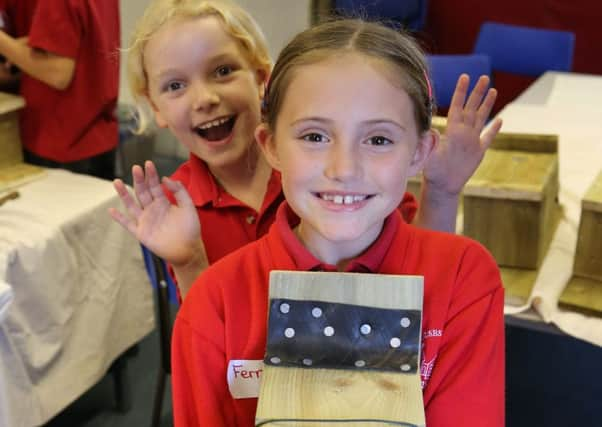Column: Improvements to breeding habitats before spring nesting


The autumn and winter months are an important time in the nature conservation year. Nidderdale’s resident flora and fauna are keeping a low profile, so there is less risk of disturbing them than at other times of year.
Meanwhile, our seasonal visitors the wading birds have yet to arrive, which means there’s still time to make improvements to their breeding habitat before spring nesting. That was the plan we started out with back in the autumn. Little did we know that the wettest month on record lay just around the corner.
Advertisement
Hide AdAdvertisement
Hide AdA bit of background first. Ground-nesting waders like lapwing, curlew, snipe and redshank are among our most charismatic and beautiful wildlife species.
They used to be widespread throughout Britain, but over the last 30 years their numbers have declined alarmingly – curlew numbers have almost halved in the past 20 years alone. The main reason seems to be a failure to breed successfully, in part due to a lack of suitable habitat.
Two important things that waders need for breeding are wet ground and rush pasture. Nidderdale’s rough, tussocky rush pastureland has traditionally proven ideal. Unfortunately the amount of this habitat has become much reduced due to modern farming practices and land use changes. And at many of the once good sites, rushes have overrun the pastures.
Although waders need some rush, once it covers more than a third of a field the birds become reluctant to nest there.
Advertisement
Hide AdAdvertisement
Hide AdThe other thing waders need is wet mud, in which their chicks can learn to probe for their food. So we started off with two jobs on our list: clearing areas that have become overgrown with rushes, and helping farmers to create scrapes in their fields – shallow wet depressions which dry out in late summer but have a muddy edge during the breeding season. These bolster the chicks’ chances of survival by providing them with a reliable food supply.
In the relatively balmy days of last autumn, we controlled the spread of soft rush at eight different sites, treating more than 170 hectares. When it came to making the scrapes, all we needed to do was to wait for some dry or frosty weather to enable us to get machinery onto site.
It goes without saying that we waited in vain. The ground has remained resolutely sodden. Our efforts to address a shortage of muddy hollows for the spring and summer were ultimately thwarted by a temporary excess of muddy, boggy areas this winter.
Elsewhere on the conservation front, a huge task has been dredging the pond at Fishpond Wood near Bewerley which was carried out by the landowner with advice from the Landscape Partnership team. It had silted up to such an extent that large sections had turned to marsh. The island in the middle, where Victorian day trippers used to moor their pleasure boats, had become a muddy promontory. Dredging couldn’t take place over the summer while the frogs, toads and newts were still at large, but was completed during the autumn.
Advertisement
Hide AdAdvertisement
Hide AdThe restored pond looks stunning, complete with its new island, which it’s now possible to imagine rowing a boat around.
Part of what is so special about the way Fishpond Wood is managed is how people are encouraged to get out into the fresh air and build a sense of stewardship towards the natural world.
It was with the same aim in mind that we have been working with volunteers from Nidderdale Birdwatchers on a series of wildlife workshops at local primary schools.
The children learnt all about birds before making their own nestboxes, using their newfound knowledge to help decide where the boxes should go. Over winter and the coming spring, they’ll monitor the boxes and record which species of bird use them. It’s a great way of getting kids excited about their everyday encounters with wildlife. Volunteers and children alike had a great time, and Nidderdale Birdwatchers will be returning to the schools later this year to hear which birds have been to stay.
Advertisement
Hide AdAdvertisement
Hide AdOn Saturday, April 16, at the AONB office in Pateley Bridge, we’ll be launching our new ‘Moorlands: People, Places, Stories’ oral history project. The project aims to explore people’s relationships with Upper Nidderdale’s moorland, Come along and find out how you can get involved.